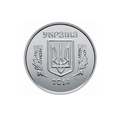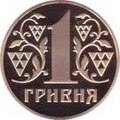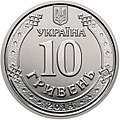
Coins of the Ukrainian hryvnia were first minted in 1992. Coins were first struck in 1992 for the new currency but were not introduced until September 1996. Initially, coins valued between 1 and 50 kopiyok were issued. In March 1997, 1 hryvnia coins were added; they are however rarely seen in circulation. The note of the same value is far more commonly used. Since 2004 several commemorative 1 hryvnia coins have been struck. New coins have been produced annually since then and they make up a valuable aspect of the Ukrainian currency system. Today, circulating coins exist in denominations of 1 kopiyka (i.e. or ₴0.01), 2, 5, (all demonetised in 2019) 10, 25 (also demonetised) and 50 kopiyok, ₴1, ₴2, ₴5 and ₴10. Also minted are bullion (including gold, silver and platinum) and commemorative coins. All of these are produced by the National Bank of Ukraine.
Contents
In October 2012, the National Bank of Ukraine announced that it is examining the possibility of withdrawing the 1 and 2 kopiyky-coins from circulation; [1] the withdrawal started on 1 October 2019. The coins had become too expensive to produce compared to their nominal value. In the same month, the Bank proposed the introduction of the 2 hryvnia coin; [2] this was finally issued as a circulation coin in April 2018. [3] While 5 and 10 hryvnia coins were issued in 2019 and 2020, respectively.
























